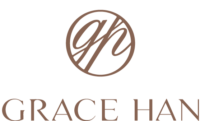June 5, 2024
What are the Alternatives to CPAP Machines: Exploring Other Sleep Apnea Treatments
Continuous Positive Airway Pressure (CPAP) machines have long been the go-to treatment for sleep apnea, a sleep disorder characterized by pauses in breathing or periods of shallow breathing during sleep. They work by keeping the airways open and are highly effective. However, not everyone with sleep apnea can tolerate a CPAP machine. Some individuals find the masks uncomfortable, while others are bothered by the noise or the sensation of forced air. This has led to the development of alternative therapies that aim to improve sleep quality without the use of a CPAP device.
If you’re one of the individuals struggling with a CPAP machine or simply looking for a less intrusive method to manage your sleep-related breathing problems, there are several options available. These range from lifestyle changes, like weight management and positioning during sleep, to medical interventions, such as oral appliances that adjust your jaw positioning for optimal airway openness. Staying informed about all your options is important, especially if you’ve wondered why you don’t have a jawline, as certain dental devices designed to manage sleep apnea also help in defining the jawline.
Key Takeaways
CPAP machines might not suit everyone, and alternatives exist to suit diverse needs.
Lifestyle choices and oral appliances can significantly improve airway management and sleep quality.
Seek personalized advice for sleep apnea management options suitable for your specific case.
Non-CPAP Therapies for Sleep Apnea
If you are looking for alternatives to CPAP machines for managing sleep apnea, various non-CPAP therapies may better align with your preferences and medical needs.
Oral Appliance Therapy
Oral appliances are custom-fitted by dental professionals to ensure they effectively maintain the position of your jaw or tongue during sleep. Two main types include mandibular advancement devices (MADs), which adjust the position of your lower jaw, and tongue-retaining devices, which hold the tongue in place to keep your airway open.
Positional Therapy
Positional therapy involves strategies to prevent you from sleeping on your back, where sleep apnea symptoms can be more severe. Techniques can include wearing a special device around your waist or back that encourages side sleeping or using pillows strategically to maintain a side-sleeping position.
Behavioural and Lifestyle Modifications
Making certain lifestyle changes has been shown to improve sleep apnea symptoms. These modifications may include:
Weight Loss: Reducing body weight can decrease the severity of sleep apnea.
Exercise: Regular physical activity can improve sleep quality and reduce symptoms.
Avoiding Alcohol and Smoking: Alcohol relaxes throat muscles, and smoking can increase inflammation, both of which can worsen sleep apnea.
Surgery Options
Several surgical procedures aim to enlarge the airway and reduce sleep apnea episodes. These include:
Uvulopalatopharyngoplasty (UPPP): Removal of excess tissue from the throat.
Maxillomandibular advancement (MMA): Repositioning the jaw to enlarge the airway space.
Hypoglossal nerve stimulation: Implants that stimulate throat muscles to keep the airway open.
It’s important to discuss these options with your doctor to determine the best treatment plan for your specific case of sleep apnea.
Emerging Technologies and Research
As you explore alternatives to CPAP machines for improving sleep quality, various emerging technologies and research avenues show promise. These cutting-edge solutions and studies aim to provide you with new and potentially effective ways to manage sleep-related issues without the use of CPAP systems.
Supplemental Oxygen Therapy
Supplemental oxygen therapy is gaining attention as a non-invasive alternative for certain cases of sleep apnea. If your body requires additional oxygen during sleep, this method can provide it directly, potentially reducing the number of apnea events and improving sleep quality. Studies suggest that for some individuals, it can lead to significant improvements, much like the effects seen with the use of CPAP machines.
Exercise and Diet Interventions
Lifestyle modifications, particularly exercise and diet interventions, can be a natural route to enhancing sleep quality. Regular exercise can strengthen respiratory muscles, which could reduce the strength of sleep apnea symptoms. Additionally, a targeted diet aimed at weight loss can ease the pressure on your respiratory system during sleep since excess weight is a known risk factor for sleep apnea.
Alternative Medicine Approaches
Incorporating alternative medicine approaches, such as acupuncture or myofunctional therapy, has been studied for potential benefits in sleep apnea management. While more research is needed, early indications reflect that these methods could aid in reducing apnea episodes by strengthening the muscles around the airway.
Advancements in Wearable Technology
Wearable technology, like smartwatches and sleep trackers, is rapidly evolving to help you monitor and improve your sleep patterns. These devices often involve applications that support better sleep quality through features such as smart lighting or smart alarms. The goal of these innovations is not only to track sleep but to actively enhance the sleep environment to promote restful sleep without the need for CPAP machines.
Conclusion
Various effective alternatives to CPAP machines are available to help manage sleep apnea. Lifestyle changes like weight management and sleeping position can lead to significant improvements. Oral appliances and positional therapy offer targeted treatments, and in some cases, surgery may be a viable option. Explore these avenues to enhance your sleep quality and overall health.






